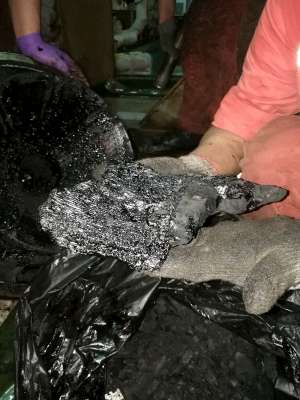
Services
Related Pages
Importance of Bunker Fuel Analysis

Conducting bunker fuel analysis is essential on-board ships to prevent engine failures, reduce vessel downtime and repairs as well as to ensure marine environment regulatory compliance is being met.
The properties of fuel oil should be known to the shipboard engineer to achieve proper adjustment and operation of centrifuge efficiently whilst managing the ship safely. Some of these key properties are:
- Density
- Aluminium Silicate Compounds (Catalytic Fines)
- Viscosity
- Water
We examine why these properties are important and how they are managed through our Bunker Fuel Analysis Package below:
Density
High density fuel may indicate a heavily cracked, aromatic fuel oil with low combustion qualities. It also reduces centrifuge efficiency resulting in poor separation of water and other contaminates (e.g. Al + Si - Catfines). This can cause abnormal liner wear; poor combustion fostering and increases in carbonaceous deposits and debris.
Aside from the impact upon operational factors, density also has direct commercial implications in the bunker transaction, the potential loss of fuel from an over-declared value on the bunker receipt can be substantial.
Aluminum Silicate Compounds (Catalytic Fines)
Cataltic fines (‘cat fines’) are hard aluminium and silicon oxide particles particles which originate from the fuel refinery process of fluidic catalytic cracking and are normally present in heavy fuel oil.
Excessive amounts of these particles can cause severe and rapid wear to the fuel pump, plungers, engine liner, piston rings and other mechanical components. Cat fines must be significantly reduced before entering the engine inlet, meaning that an efficient onboard fuel oil treatment system is required – see Fuel System Check. Having the bunker fuel tested is utmost critical to operate the ship professionally and efficiently reducing downtime.

Viscosity
Viscosity is a measure of a fuel’s resistance to flow and is generally used to provide information on its’ handling, treatment, and atomization qualities. Applying the correct temperature is crucial; on the one hand, excessive heating can cause a cracking effect through the gases which are released from it, while water-vaporized fuel can form steam pockets in the fuel line, on the other hand, insufficient heating can cause poor atomization or delay burning leading higher thermal load and in some extreme cases result in mechanical failures.
Water
Water presence in fuel lowers the energy content. Excessive water content can cause problems in the fuel pre-treatment and during high-pressure fuel injection. Salt water (seawater) can further lead to problems such as corrosion in the fuel apparatus, cause pumps and injectors to stick, or leave excessive deposits in the cylinders and turbocharger.
Members’ Benefits
We strive to provide fuel oil quality assurance for all our clients through offering our members the following benefits:
- Dedicated Account Managers and Customer Service Executives for each & every client
- High level of technical support on all fuel related issues
- Complimentary educational support and/or fuel seminars on personalised topics of interest
- Operational and technical advice tailored to on-board machinery models.
- Dispute management consultation and advice
- Analysis reports & fuel quality data (‘Bunker Alert’) through Web Access
- Fuel Analysis reports sent to the customer within 24 hours after the fuel sample has been received.
- We operate 365 days a year, including weekends and public holidays.
Get in touch
If you have any questions or comments please don't hesitate to contact us
Services
Fuel Testing Solutions Water Compliance Services IHM & Recycling Asbestos Management Solutions NDT&UTMContact Us
192 Pandan Loop,
#05-27 Pantech Business Hub,
Singapore 128381
T +65 6271 8622